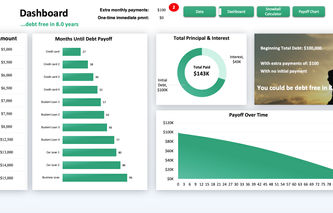Annual percentage rates on credit cards are like calories in diet chocolate bars—the lower, the better. So, what is the best APR for a credit card?
The best APR for a credit card is 0%. A zero-percent annual percentage rate is usually only available for an introductory period in some cards. Arguably, an APR this low means there are no costs to owning and using the card (fees and commission notwithstanding). Zero is as low as you can go—and that’s like a zero-calorie Snickers bar. Possible in theory, not available in practice. So, what options do you have?
This article will show you:
A very real and possible good APR
How to understand what low, average, and high APR means in practice
How to determine yours
How to get a good one now and stop bleeding money
What Is a Good APR for a Credit Card?
A good APR on a credit card is typically lower than the average APR, which currently stands at 16.27% for all existing accounts. Annual percentage rates usually range from 12% to 24%, according to the Federal Reserve. A 12% APR would be considered good.
All else being equal, the lower the APR, the better. Just starting your credit journey? If you’re new to credit cards, there are cards available that help you build credit, regardless of your credit score. However, due to the lack of credit history, interest rates are higher. They typically range from 16%–27%, although many also offer a 0% introductory APR rate.
It’s a similar story for credit cards for bad credit— Basically, poor credit score = higher interest rates. If you have a poor credit score or no credit history, you are seen as a greater risk. Those with poor credit can expect interest rates ranging from 19%–28%.
Alternatively, if you’re lucky enough to have a good credit score (but not lucky enough to be a millionaire), you can certainly get your hands on a good APR. An optimal interest rate for those with high credit would be anything below 14%—the lower, the better!
Similar articles:
How to Lower APR on a Credit Card
Trying to qualify for a lower APR? As your creditworthiness is one of the critical factors in determining your APR, improving your credit score can seriously boost your chances of qualifying for a good APR credit card. Here are three simple ways to build credit and increase your likelihood of getting a good APR rate—
1. Seek lower balance transfer rates
Keep an eye out for credit cards with low promotional rates on balance transfers, preferably 0%. While switching to a new credit card can have a negative impact on your credit score, the lower interest rates will probably benefit your financial well-being in the long run.
2. Pay off your balance
For those who can pay off the entire balance, this really helps increase your credit score and qualify for a lower APR. Paying off your balance will decrease the interest charges every month and will give you more leverage if you choose to negotiate for a lower APR rate.
Try out our free credit card payoff calculator to find out how to pay off your balance.
3. Request a lower APR
If you believe you’re entitled to a lower APR, you can submit a request directly through the card issuer. Requesting a lower interest rate can be done through a customer service specialist. It’s worth noting that sending a request does not guarantee approval, and some card issuers may not even accept your request in the first place. But wait, how do banks and credit card issuers determine APRs in the first place?
What Is APR on a Credit Card?
The APR (Annual Percentage Rate) is a credit card's annual interest rate when carrying a balance. The rate represents the cost of borrowing money and includes interest, fees, and other charges. While interest rates and APR figures may differ depending on the financial product— There is no difference between interest rates and APR when it comes to credit cards.
The APR primarily relates to the balance on your credit card. However, late payments and cash advances can also come with an APR. APR rates differ among banks and cardholders, as rates are determined by various factors, such as your credit score and transaction type. Some cards also have variable APRs, which means the rate can change at any time.
How APR is Determined
Credit card issuers try to find their sweet spot for risk-to-reward ratios for each prospective cardholder. The safer the bet, the more they can offer to the customer. And vice-versa—banks will up the charges on credit card holders they’re less confident about. It all comes down to—
Creditworthiness
While some credit cards will charge the same APR across all customers, many credit card companies also set ranges—your creditworthiness will determine where you fall in that range. Those with good credit scores are more likely to get lower interest rates. According to the2021 Consumer Credit Card Market Report, here are the APR rates you should expect to receive based on your credit score—
Superprime (740+): 16%–18% APR
Prime (670–739): 20%–22% APR
Subprime (580–669): 22%–24% APR
Deep Subprime (less than 579): 24%+ APR
*Note that these figures are based on 2020 findings and only serve as a general guide. Always check with your credit card issuer to confirm your APR rates. Banks and credit card companies express their trust in you by calculating a credit score. The higher you rank, the better the options you get. Check your credit score with Credit Karma(an easy tool that won’t harm your credit score) and get a better APR now.
How is APR calculated?
To stay on top of your APR charges, you can easily calculate how much APR is being applied. Follow these easy steps—
Identify your current balance and APR rate
Divide the APR by 12 (to represent the months in the year)
Multiply the number by the balance amount
For example, you owe $700 on your credit card and your APR is 16%. Divide 16% by 12 = 0.0133. Multiply $700 x 0.0133 = 9.31. So, you can see you’re being charged an interest of $9.31 based on your current $700 balance. But this is just your standard scenario as there are different APR types (more on that later). First, let’s see how you can get a better deal now—
Types of Credit Card APR
As well as differing rates among banks, there are also different types of APR rates worth looking out for when reading the fine print.
Introductory APR
New cardholders may be entitled to an introductory APR to cover purchases and balance transfers. Depending on the credit card, this introductory APR can start from 0% and be applicable anywhere between 6–21 months.
Purchase APR
As the standard type of APR, the purchase APR refers to the interest rate you’ll be charged for purchases with your credit card. The interest rate generally takes effect if you fail to pay the total balance by the monthly due date, and you carry what you owe onto the next month. This is the most common type we find in the wild.
Balance transfer APR
The balance transfer APR refers to the interest rate charged to the amount you transfer to a credit card from another card or loan. The fee for a transferred balance typically stands between 3%–5%.
Cash advance APR
The cash advance APR is the interest charged when you make a cash withdrawal from your credit account—often used to get your hands on fast cash. Cash advance APRs come with additional charges, making the rates higher than the purchase and balance APRs. Expect to be charged between 3%–5% for a cash advance fee. Additionally, cash advances usually don’t have a grace period, so you start building interest as soon as you take the cash advance out. Avoid this type of transactions because they involve added charges to begin with.
Penalty APR
You can be charged a penalty APR if you don’t make the payment on time or miss it altogether. In many cases, the penalty APR will be higher than the standard interest rates and reach up to 29.99%, which is the maximum banks are permitted to charge. Be careful… continued late payments can result in the penalty rate being applied to your account indefinitely. For new cardholders, if you’re charged with a penalty APR, this will likely render your introductory offer void and harm your credit score.
How to Qualify for a Good Credit Card APR
If you want to get your hands on a good credit card APR, here are some handy steps you can follow—
1. Improve your credit score
Card issuers will be looking at your creditworthiness to determine your APR, and having a higher credit score will give you more leverage when negotiating a lower APR. Bad credit score? Follow our easy tips if you want to improve your credit now.
Read more on credit:
2. Deliver on-time payments
Your payment history makes up approximately 35% of your total credit score. So, a great way to improve your credit is to make on-time payments. Set up automatic monthly payments if you have trouble remembering when it’s time to pay up.
3. Decrease credit utilization
Credit utilization is the balance amount divided by the sum of your card’s credit limits. To improve your credit score, keep the utilization ratio rate below 30%.
4. Increase the length of your credit history
The length of your credit history covers around 15% of your total credit score. If you want to increase the average length of your credit history, we recommend not closing any no-annual fee card accounts. You can also make small charges on older accounts to avoid inactivity and closure of the account.
What Is a Low APR for a Credit Card?
A good APR is anything below the average of 16.27%. However, those with high credit score stand a solid chance of getting a low APR of 10% or lower. The best low-APR credit cards generally offer a 0% introductory APR, which is applicable for a minimum of 6 months. These no-interest offers can cover balance transfers and purchases.
Who would benefit from a low APR credit card?
Those with an excellent credit score are more likely to get a low APR credit card, as it shows that you’re more likely to make timely payments.
Credit scores that range from good to excellent will give you a good chance to qualify for 0% introductory offers.
Credit cards with 0% introductory APR offers are a great choice if you want to pay down transferred debt or plan to finance a substantial interest-free purchase.
Low APR cards are also recommended for those carrying a balance from month to month, as the interest rates will be lower—giving you the opportunity to pay down the balance faster.
What Is a High APR for a Credit Card?
If your APR is higher than the average of around 16%, it is considered a high APR rate and is likely to affect those with bad credit scores. This includes cardholders who don’t make payments on time or have high credit card balances.
Who would benefit from a high APR credit card?
Despite having a high APR rate, you can still avoid interest charges if you are committed to paying off your balance every month. To do so, only use your credit card for purchases you can afford to pay, and aim to pay off weekly purchases, so your balance doesn’t get too high.
High APR rates are often attached to reward cards and premium cards, which can offer several benefits, such as travel credits, high reward rates, and travel insurance. However, be aware that if you’re carrying a monthly balance, the interest rates can often be more than the value of the benefits and rewards.
SUMMARY
Understanding the APR on your credit card is the first move in finding the best APR offers for you. Depending on your current APR rates, you can also take steps to lower your APR—a move that could serve you well amid our unpredictable economic climate.


.jpg)



